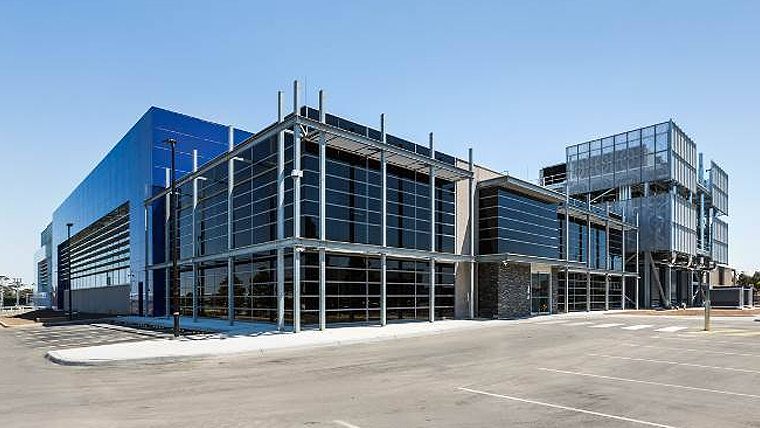
There’s a lot to like about this story.
The main character, Robin Khuda, migrated to Australia from Bangladesh as an 18-year-old student. Last week, at 44, he celebrated the AU$24 bln sale of AirTrunk, the data centre company he created just nine years ago.
The sale is the largest corporate deal in Australia this year. And the world’s largest ever sale of a data centre business.
The sellers were an Asian investment fund managed by Macquarie Asset Management, PSP Investments, several smaller investors, and Robin Khuda himself. The buyers were the trillion-dollar US asset management giant Blackrock and CPP Investments (the Canadian Pension Plan). In a contested auction process, they beat out an international consortium led by IFM Investors, an investment manager owned by 17 Australian superannuation funds.
No doubt the teams of bankers and lawyers who advised on the deal were handsomely rewarded for their efforts.
The biggest winner was Khuda himself. The transaction propels him up the ranks of Australia’s multi-billionaires. His fortune looks likely to keep on rising given he’s retained part of his stake in AirTrunk and has expressed a goal of growing the company into a $100bn behemoth.
Most of the other sellers to BlackRock/CPP acquired their AirTrunk stake in 2020 based on an enterprise value of just $3bn. On that basis last week’s sale looks like a stellar return in only four years. Just how stellar depends on details of the sale that haven’t been disclosed, including debt and equity injections in recent years. But by all accounts, it’s been a bonanza for those investors.
What explains this explosive value creation? The boom in demand for large-scale data centres.
Since establishing AirTrunk in 2015, Khuda has made it a regional leader in the development and operation of massive, or ‘hyperscale’, data centres. According to the company’s website, it creates ‘a platform for cloud, content and large enterprise customers’ and is the ‘home of hyperscale’ in the Asia-Pacific and Japan.
The word ‘hyperscale’ is the key. It refers to data centres with ‘digital infrastructure’ on the immense scale required to support the huge demands for cloud computing, data processing, and data storage from large companies and government entities.
Unsurprisingly, the biggest users of data centres are the world’s major tech companies – Microsoft, Amazon, Google, Meta and co. That’s the key customer base for companies like AirTrunk.
These customers are prime credits looking for long-term access to vast data centre capacity. The growth in demand for that capacity continues to accelerate, driven now by the phenomenon of artificial intelligence, a phenomenon that is only just beginning.
And there’s nothing investors like more than growth.
Robin Khuda was very early in recognising the potential of the hyperscale data centre business. And he executed his strategy brilliantly. AirTrunk, headquartered in North Sydney, now owns and operates 11 hyperscale data centres in Australia, Japan, Hong Kong, and Malaysia. Additional centres are in development.
A hyperscale data centre is essentially a very large building or group of buildings housing IT equipment with sufficient electricity and water (for cooling) to run that equipment. The key to success in the business is to get the right location, the right equipment, and the operating cost structure to attract long-term lessees.
AirTrunk’s website claims its ‘unique capabilities, designs and construction methodologies allow us to provide customers with a scalable and sustainable data centre solution at a significantly lower build and operating cost than the market’. The company’s rapid expansion suggests it’s a competitive player in the market.
The scale of the market (and the physical data centres) is evident from the operations of Amazon Web Services (AWS), the cloud computing arm of Amazon. According to digital infrastructure specialists Digtl Infra, ‘the data center portfolio of AWS totals 33.5 million square feet, of which the company leases 18.0 million square feet (54% of total) and owns 15.4 million square feet (46% of total)’.
The world’s largest data centre is the China Telecom-Inner Mongolia Information Park with a total area of 1 million square meters (about 10.7 million square feet).
The AirTrunk deal has left Australian investors looking round for opportunities to gain from the apparent riches of the data centre business. The most obvious is NextDC, an ASX-listed data centre company with data centres throughout Australia and three in the planning or development stage overseas, including one in Auckland.
NextDC’s share price has risen since the AirTrunk deal was announced but nothing dramatic. The lack of details about the deal makes valuation comparisons difficult.
Another route to a data centre exposure is NZX-listed Infratil which holds about half of CDC, an Australasian data centre operator. Infratil’s share price is up more than 10% since the AirTrunk announcement.
Perhaps most interesting is the ASX-listed global property giant Goodman Group. For more than a decade it has displayed an ability to outperform its competitors by identifying key emerging trends. Early on it recognised the upside in logistics and it’s already active in the data centre business. Last month Goodman announced that data centres now make up 40% of its development pipeline.
The AirTrunk deal highlights three important points. First, there is enormous global demand for high quality infrastructure assets. Secondly, the world is awash with private capital – asset managers, private equity investors, superannuation and pension funds, and sovereign wealth funds. Thirdly, information technology in all its forms will continue to be a major driver of wealth creation.
And perhaps there’s a fourth point worth remembering. Immigrants can be great for the economy.
*Ross Stitt is a freelance writer with a PhD in political science. He is a New Zealander based in Sydney. His articles are part of our 'Understanding Australia' series.
1 Comments
The 4'th point : Immigrants can be great for the economy ... Gummy was at the Bakels NZ Pie awards a month ago , the majority of winners being Asian immigrants ... including the Supreme Pie winner ( ex Philippines ) ...
... immigrants are young , having kids , bringing fresh ideas & innovations ( Sumatra slow cooked beef brisket pie , would a Pakeha have thought of that ! ) ... NZ needs to keep the Welcome Mat out ...

We welcome your comments below. If you are not already registered, please register to comment.
Remember we welcome robust, respectful and insightful debate. We don't welcome abusive or defamatory comments and will de-register those repeatedly making such comments. Our current comment policy is here.